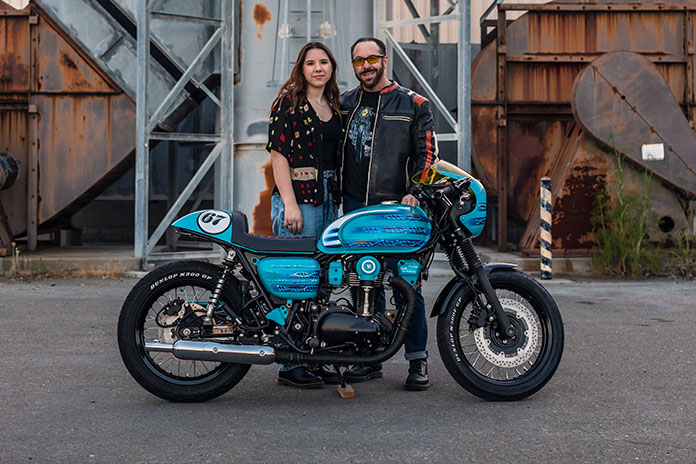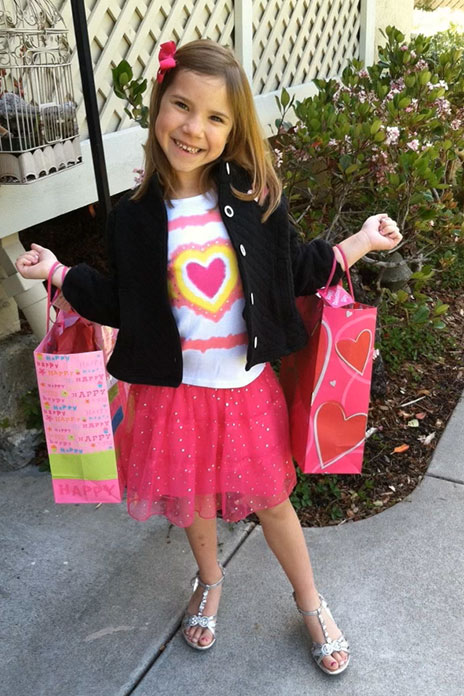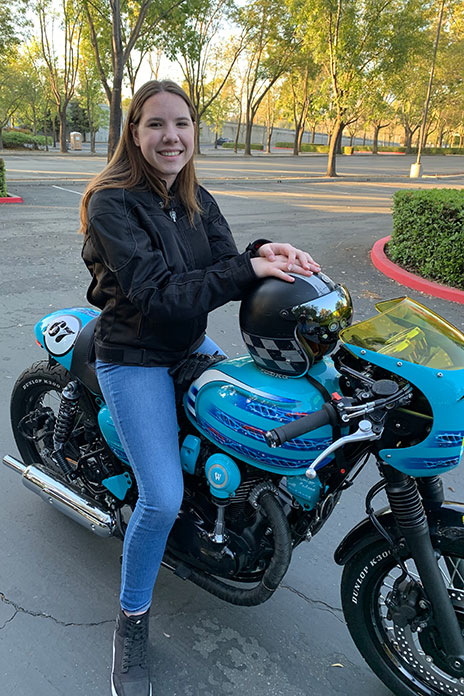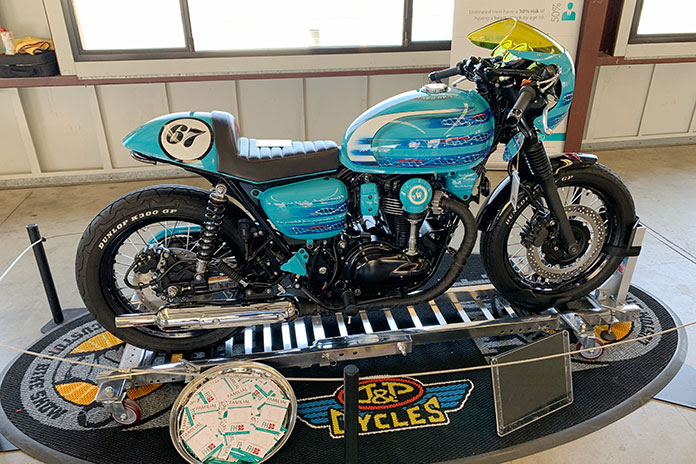The following story is about more than just a Kawasaki W800 Cafe customized to raise awareness for a common but relatively unknown genetic condition but also – and perhaps more importantly – about how a father and daughter bonded through their discovery that they both had this condition and a shared enjoyment of motorcycles. This story first appeared in Rider‘s June 2023 issue. – Ed.
Scott Radabaugh was on the elliptical machine at his local gym when he felt the first signs of trouble.
“I started having chest pains,” he said. “It was a burning sensation, just like when you do intense exercise and feel that lactic acid burn in your muscles. I realized, ‘Oh my God, I’ve only got one muscle in the center of my chest.’”
After the pain subsided, Radabaugh called his doctor. Even though he was just 43 years old, he underwent an emergency quadruple bypass to prevent what would have otherwise been a fatal “widow-maker” heart attack. When Radabaugh recovered from the surgery, he discovered that the cause of his problems, a genetic condition known as Familial Hypercholesterolemia, was present in all three of his children – including his 5-year-old daughter, Chloe.
“Kids with FH look normal and healthy,” Radabaugh said, but he added that it can drastically reduce life expectancy to as young as adolescence. However, what started out as feelings of fear and anger at the diagnoses led to a bond between father and daughter over motorcycles, both riding and repairing them.
When Scott and Chloe – now in her mid-teens – shared their story with me, it really hit home, not only because it involves motorcycles but, maybe more importantly, because I’m a parent as well.
‘My whole purpose was to help save Chloe’s life’
When my wife and I were expecting our first child, whenever people asked if I had a preference between a boy or a girl, I always said I wanted a boy. I wasn’t being misogynistic; I just understood boys better. Of course, I got a girl, and while I still have a lot to learn about females, there is definitely something to be said for the bond between fathers and daughters. I wouldn’t change a single day of the past 12 years. Coincidentally, my daughter is the same age Chloe was when she started undergoing aggressive treatment for FH.
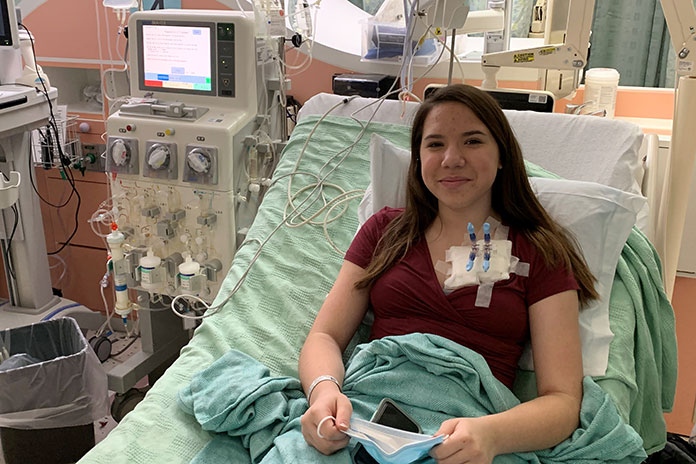
Familial Hypercholesterolemia is a life-threatening genetic condition that causes extremely high levels of low-density lipoprotein, more commonly referred to as LDL or “bad cholesterol.”
“There are two types of FH,” Scott told me. “There’s heterozygous FH, meaning that you inherited the FH gene from one parent. And then there’s homozygous FH, meaning that you inherited the FH gene from both parents.”
Heterozygous FH, which Scott discovered he has, affects approximately 1 in 250 people. Since there are about 8 million motorcyclists in the U.S., Scott said “about 32,400 riders” have heterzygous FH. Unfortunately, according to the Family Heart Foundation, less than one third of people with FH know they have it.
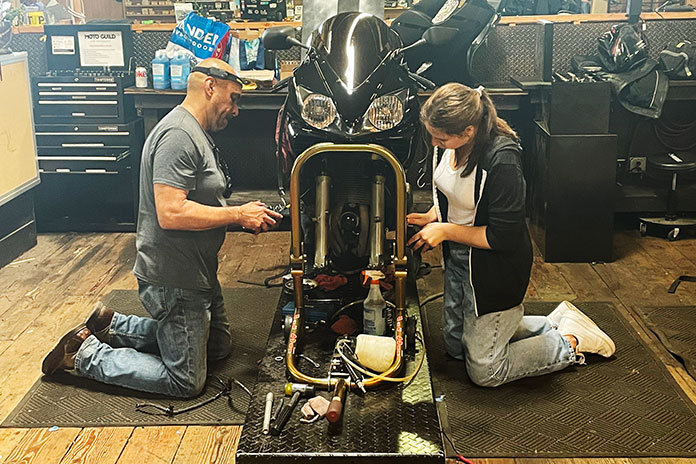
“Most people think that high cholesterol is an adult-lifestyle disorder from eating too much bacon,” Scott said, but he added that’s not the case with FH, which is the danger of the condition. “You don’t look like a heart attack waiting to happen. Especially not a 5-year-old girl.”
He told me his wife also has heterozygous FH, and as a result – or at least one possible genetic result – their daughter Chloe ended up with the rare and more severe homozygous FH.
“Kids with the double defect, homozygous FH, can have heart attacks as toddlers,” he said. “And life expectancy can be like 16 or so.”
Fortunately, the Radabaughs caught it in time for Chloe to start receiving treatment, but Scott told me he struggled at the beginning.
“I was really angry at the whole process,” he said. “I was like, ‘This is the cruelest joke of all. I get to survive my quadruple bypass and then watch my youngest child suffer with this very serious and potentially fatal condition.’ But after I went through the stages of grief thing, I decided that my whole purpose was to help save Chloe’s life and just guide her through these tough times and try to find cures and treatments that will keep her safe.”
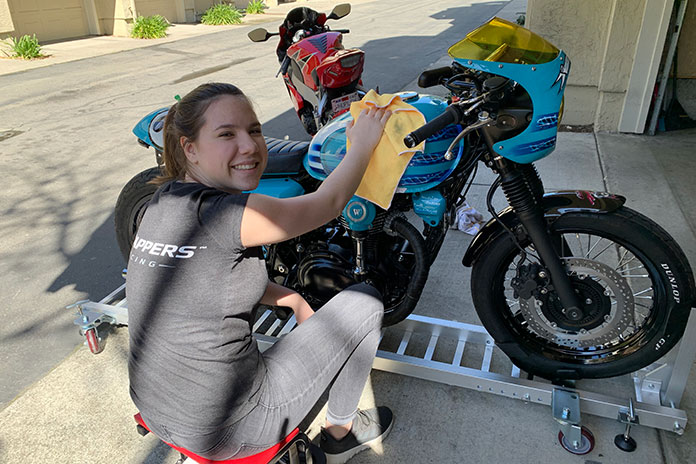
When Chloe started a new form of treatment in 7th grade, one that required her to miss school for a few days every two weeks, she got bullied. She told me it was mostly the result of the toxic friend group she was part of, but having to be gone so much didn’t help.
“Nobody understood it,” she said. “So I would try to explain it, but they didn’t really care.”
In her younger years, the FH had been mostly an inconvenience, she said, but as she entered adolescence, it became an issue of injustice, something that’s very important at that age.
“At that point, I was realizing that not everyone has to deal with this and was like, ‘Why do I have to do this? It’s not fair.’”
Scott Radabaugh isn’t a doctor, so when it came to medical treatments, he had to leave it in the hands of professionals. However, he is a motorcyclist, and when he realized his daughter was struggling, given his mission of providing guidance through her tough times, he leaned on what he knew.
“To help her, I’d take her on some speed runs on my 2011 Honda CBR1000RR,” he said.
“There’s a little place where we can kind of get away and open it up a little bit. And, you know, adrenaline is the best cure for depression in every motorcyclist. I think Chloe and I got up to maybe 127 mph one time. I’m not gonna win Parent of the Year for that, but she loved it!”
‘Chloe has the motorcycle gene’
Even though Scott had family connections with motorcycling in his younger years, he didn’t get his first motorcycle until he was 18, and even then, it was a surreptitious purchase.
“Some of my relatives used to own the first Harley-Davidson shop in Houston,” he told me. “They had a flat track, and my dad used to work at the concession stand.”
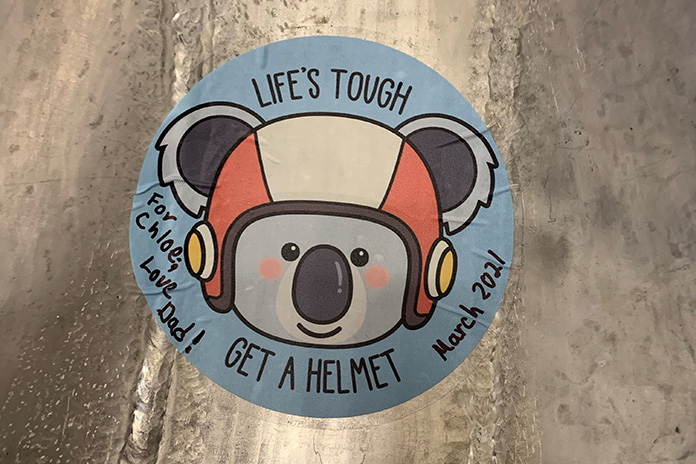
Scott’s relatives planned to give him a small trail bike as a gift. Another family had previously bought it for their son, but when he crashed it and broke his arm on the first day, they brought it back.
“It had a few scratches, but my relatives were gonna give the bike to me. I even got to sit on it and everything, but my parents must have seen that look in my eye, and they were like, ‘Oh hell no.’”
Later, when Scott went off to college at Texas A&M, he discovered there was a superspeedway right outside of town.
“So I bought my first motorcycle when I was 18 without my parents knowing. And I was actually doing club racing before my parents found out,” he said. “I remember my mom called the insurance company to ask a question about my car insurance. And they said, ‘The car or the motorcycle?’ That’s how I got busted.”
When I asked Chloe if she knew about this story, she grinned and said she had heard it before.
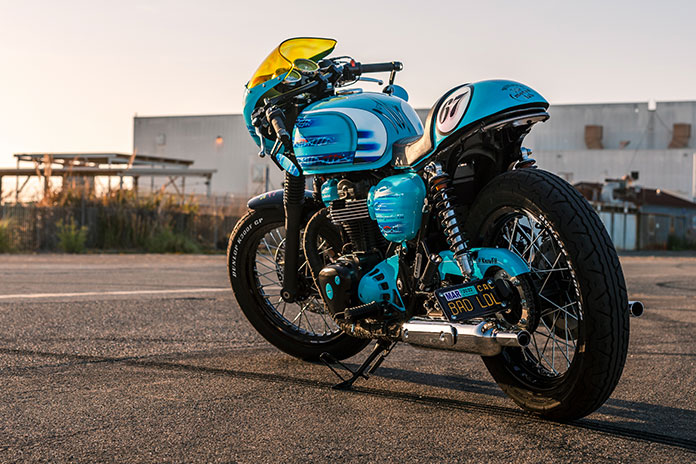
Scott said that nobody else in his family liked motorcycles. “As far as my kids, Chloe has the motorcycle gene. And there’s something to that.”
I can understand Scott’s sentiment. Motorcycling can be both a solitary and a group endeavor. I enjoy riding alone, but I much prefer to share the experience. I don’t have a lot of friends nearby who ride, so I was glad when my wife finally decided she trusted me enough to join me as a passenger. And I was even more excited when my kids expressed an interest. For Chloe, this interest started young as well.
“I remember that my dad always had a motorcycle in the garage. I always remembered seeing that,” she told me. “And he would take us to motorcycle races and stuff, which were always fun things to get to do. I would just sit back and watch it all. And then as I grew up, I started going on rides with my dad. I’d be on the back of his motorcycle.”
Scott said these experiences were “an amazing way” to connect with his daughter.
“We would stop and take breaks and get a cup of coffee or something to drink and just chitchat. The amazing thing about this is that an inanimate motorcycle has had such an impact.”
However, he said, the CBR1000RR wasn’t really comfortable for a passenger, so Scott set out to find a bike that would be more suitable for the two of them and that he could eventually give to his daughter.
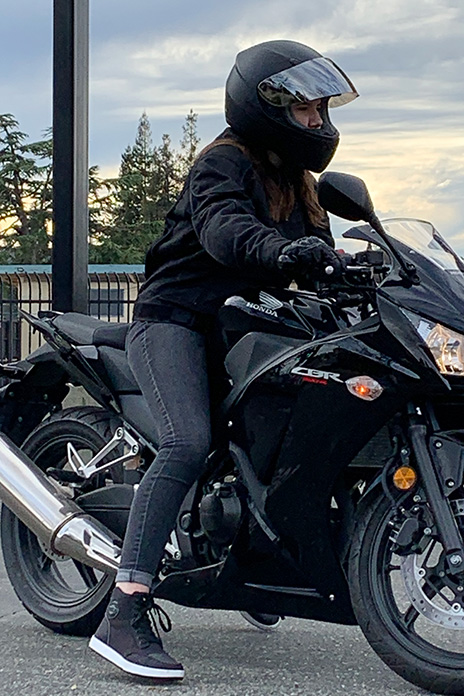
He ended up getting a screaming deal on a 2019 Kawasaki W800 Cafe at the start of the Covid-19 pandemic. Because he saved so much money, he decided to trick the bike out and make it fun for Chloe.
“The next thing you know, we’ve got this freaking show bike,” he said, “but I also wanted to use the bike to raise awareness for FH, as a conversation starter.”
Scott describes the final look for the bike as a visual match of DNA and genetics, in keeping with the FH awareness theme, and it has been shown at The Quail Motorcycle Gathering in 2022 and other shows.
“The nickname of the bike is ‘Motorcycle Saves Lives,’” Scott said, “because the first one it saved was my daughter’s.”
Beyond the Kawasaki W800 Cafe: Building a Future Together
When it was time for Chloe to learn to ride, she started on a Honda CBR300R that belonged to John Bartevian, a hot-rod painter who did the paint work on the W800. Then she moved on to the Kawasaki W800 Cafe, but Scott said the bike soon became “almost too nice to ride because it was in all these shows.”
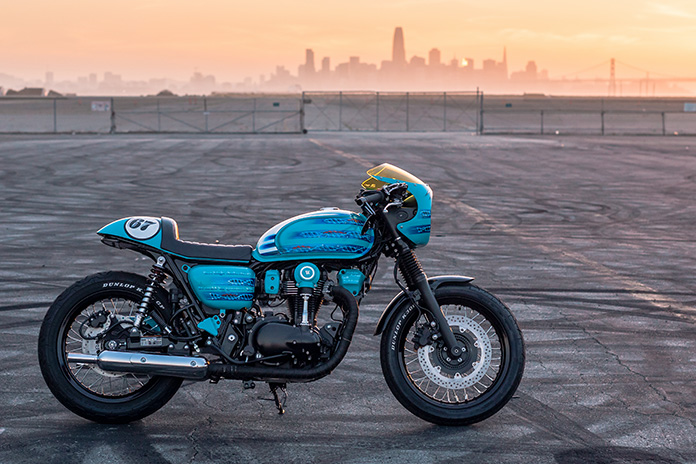
“So then she started learning how to ride my CBR1000RR, which was amazing.”
Chloe agreed. “You just can’t really get that feeling other than by riding. There’s no other way to experience it. It’s just really fun to be in control of something that can go so fast. I really like the adrenaline rush.”
Not long after, Scott bought a 2001 Honda CBR600F4i in “really rough shape” from Craigslist, and they started working together to rebuild it.
“She’s actually done most of the work on the whole thing,” Scott said. “There’s a motorcycle shop on Treasure Island, which is near San Francisco, called the Moto Guild. You take your bike there, and you can work on it in their shop, and they have instructors walking around or you can have private lessons. Chloe learned how to rebuild the front forks, change the sprockets, chains, brake rotors, brake lines. She’s almost gone through every system in the bike except into the engine. It’s amazing. She probably knows more about motorcycle repair than I do at this point.”
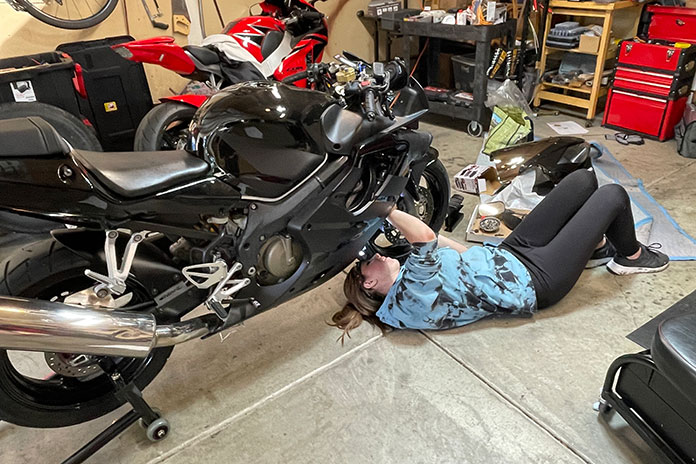
Beyond amazing, Chloe said she was a little surprised that she enjoys it as much as she does, since it wasn’t something she ever wanted to do when she was younger.
“Then we started customizing bikes,” she said. “And as I started learning about the different parts of the bikes, it was really interesting to me. And once I got the opportunity to work on a bike and help fix it up, I found myself enjoying putting it together and taking it apart and watching it get better. It’s a really good sense of accomplishment to see something that you fixed up from nothing basically.”
It’s also rare – and special – for a father and his teenage daughter to spend time together, sharing a common passion. That’s especially meaningful for Scott.
“The one thing that I really like most about working on bikes with Chloe is that it gives us time to talk,” he said. “It’s not the easiest thing for a dad and a daughter to have meaningful conversations, but when we’re working on a bike together, there’s nothing else to do except chitchat with each other.”
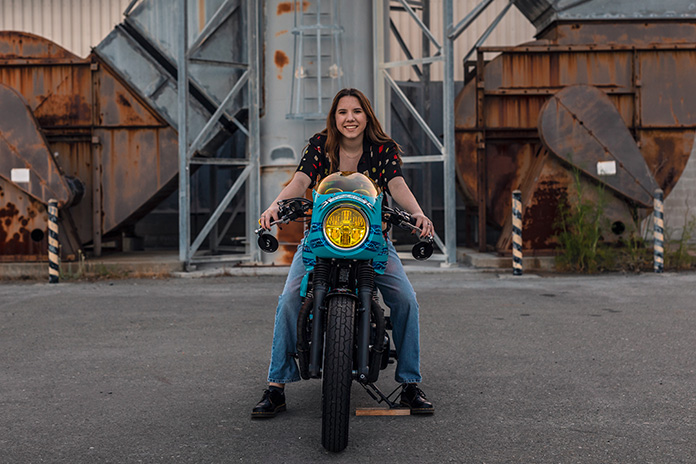
My own daughter is just starting into her teen years, a few years behind Chloe, and I can relate to this sentiment. Those years for girls are pretty foreign to me, and it’s everything I can do to find ways to relate to her and keep her talking to me. So it wasn’t surprising that when I asked Scott and Chloe what the future held, even though Scott had previously spent so much time talking about raising awareness of FH, his first response to this question was what he hoped to see for his daughter.
“I would love for Chloe to do a race school on a track,” he said, “because I feel like that’s where you really learn how to ride a motorcycle, and you really learn where the limits are, and it just gives you so much more confidence on the street.”
He also mentioned the Royal Enfield “Build. Train. Race.” program, which is exclusively for women.
For Chloe, both ideas sound fun, but when it comes down to it, what she really wants to do for now will be familiar to most of us.
“I just want to focus on riding.”
For more information on the “Motorcycle Saves Lives” Kawasaki W800 Cafe, including specs and build details, or Familial Hypercholesterolemia, visit the Family Heart Foundation website.
The post A Father, A Daughter, and a Custom Kawasaki W800 Cafe That Saves Lives appeared first on Rider Magazine.
Source: RiderMagazine.com

